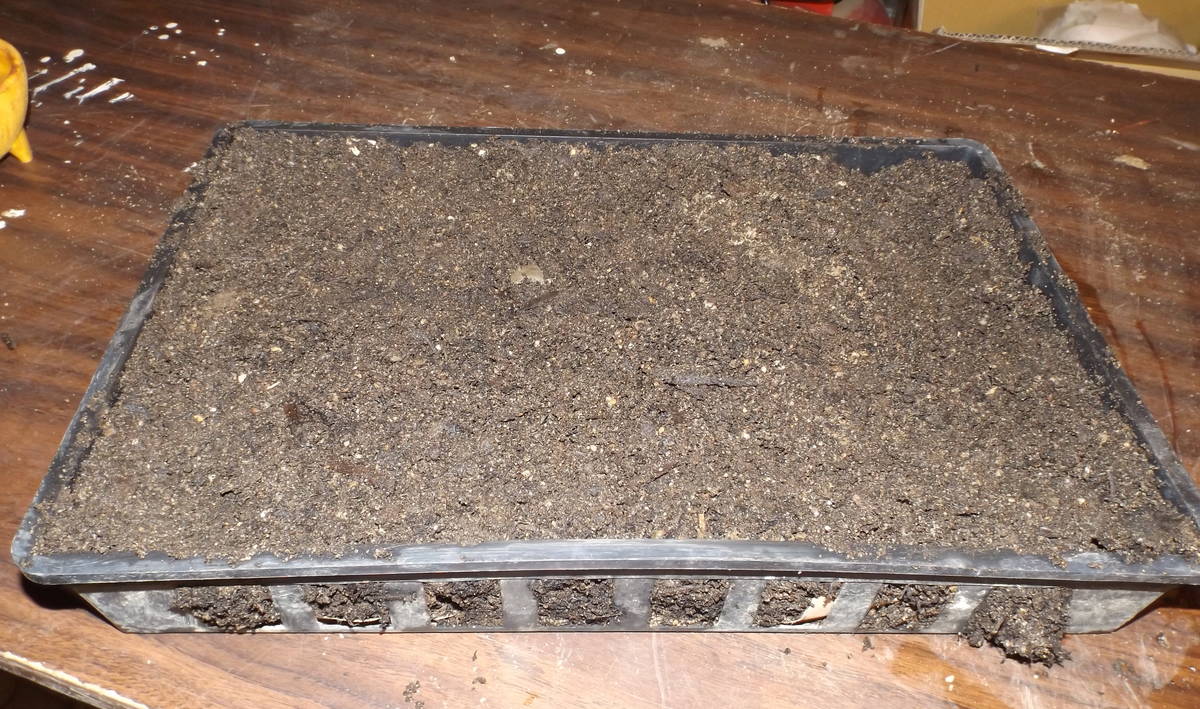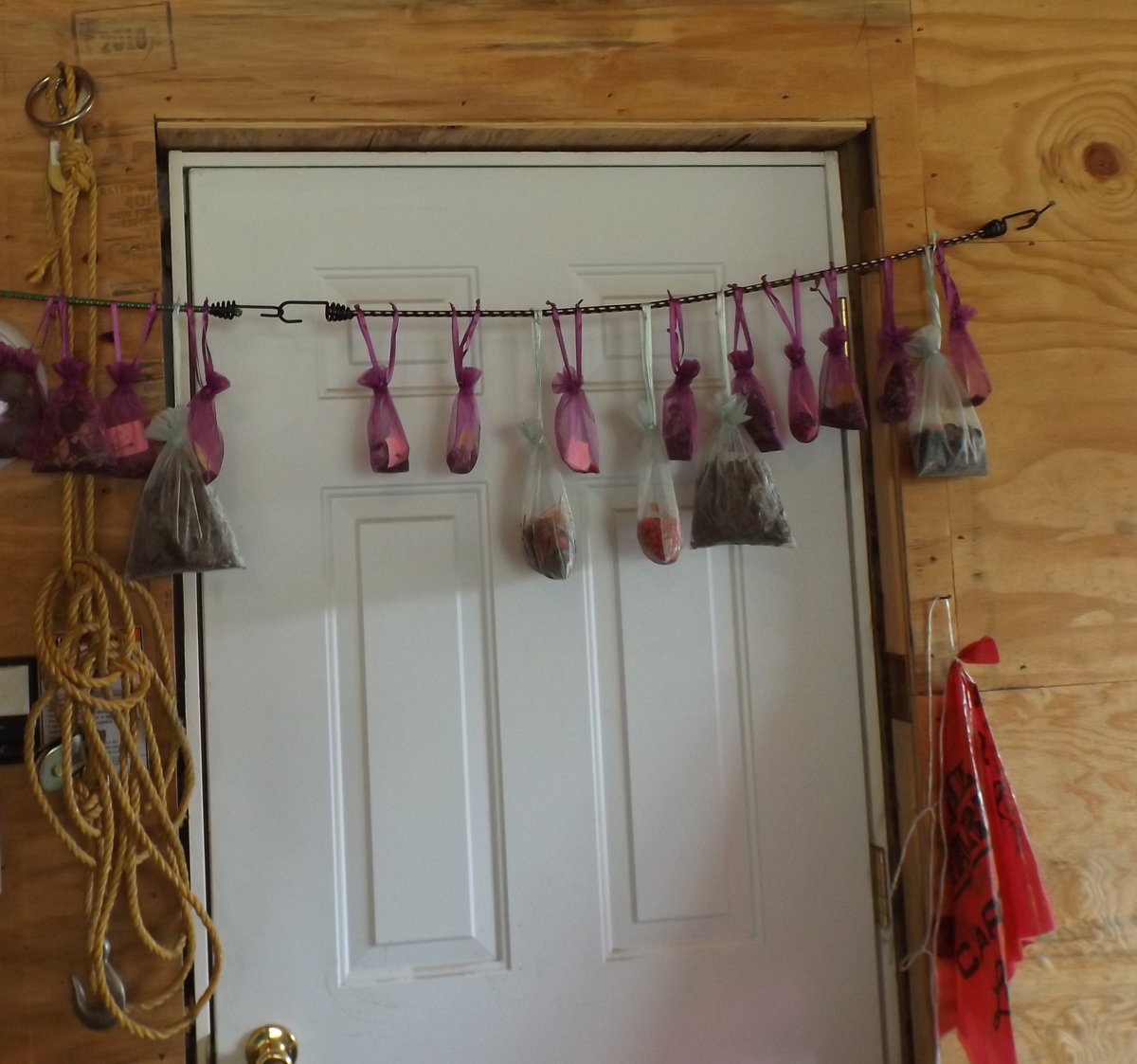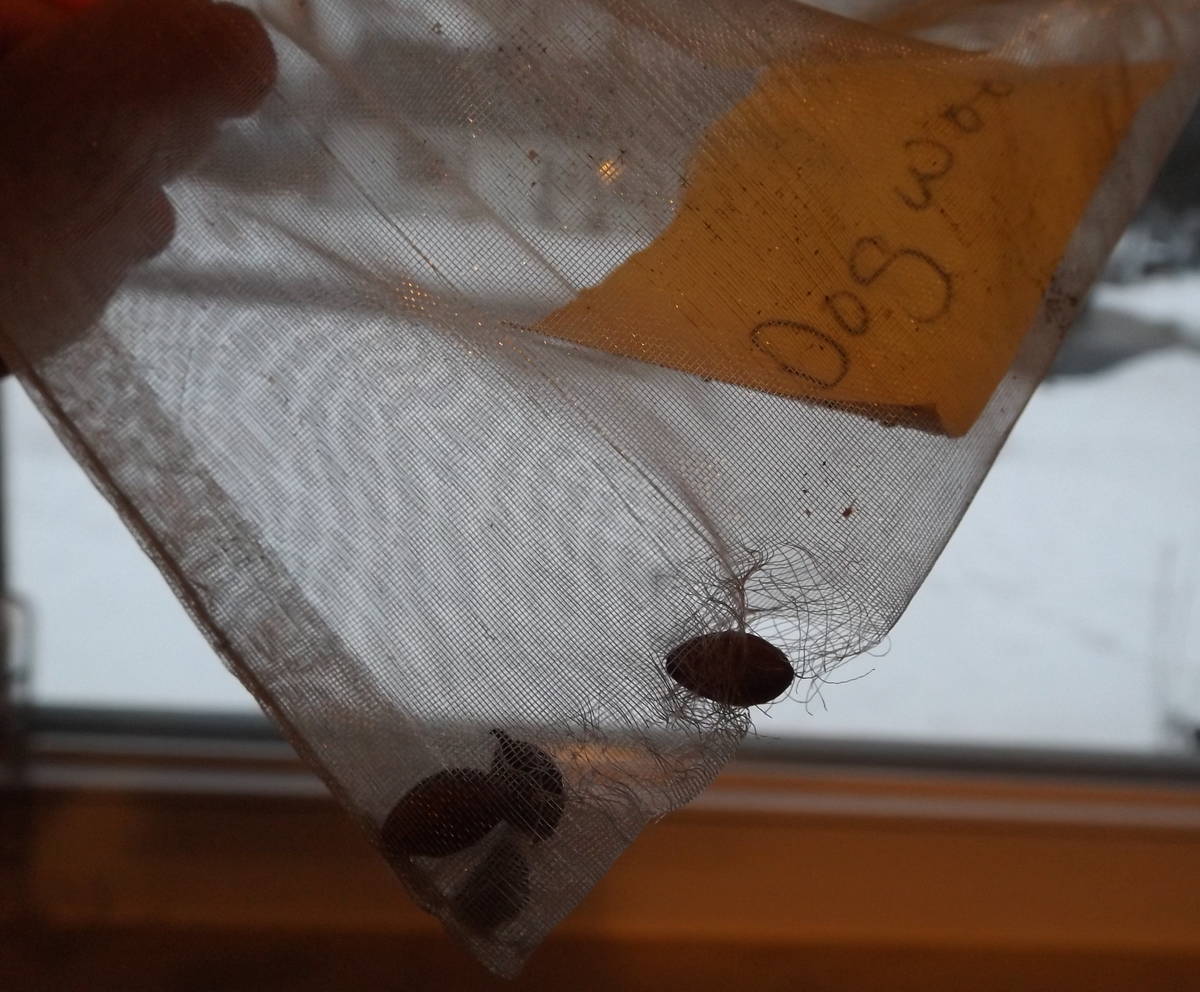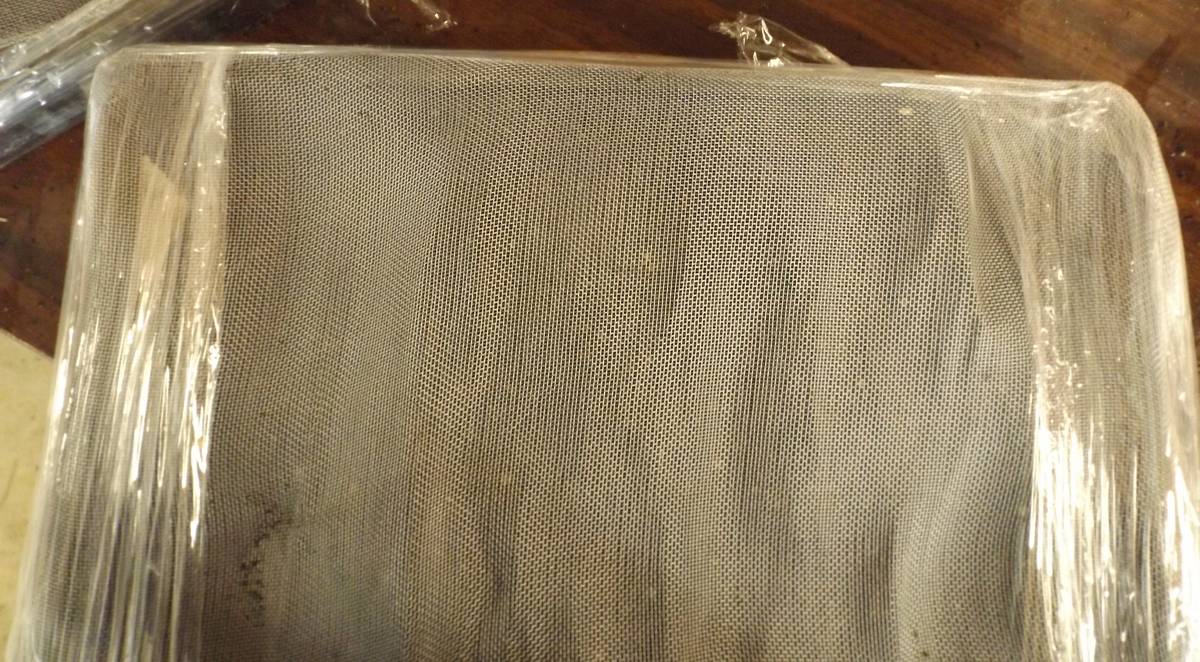Growing Pink Dogwood Trees from Seed.
Is it easy? Is it even possible? Can you really grow Pink Dogwood trees from seed?
Hmmmmmmmm. Difficult questions for sure. Here’s the deal, I am going to give it to you straight and some are not going to like what I have to say. I don’t care. I know what I know, and what I know is that it is highly unlikely that you will successfully grow a Pink Dogwood tree from seed.
Chances are it’s just not going to happen. You can collect seeds from a Pink Dogwood, or even from a Red Dogwood tree, but the odds are that 99.9% of the seeds that you get to germinate are going to produce a white dogwood tree. That’s just the way it is.
There are plenty of places online where you can buy “Pink Dogwood Tree Seeds” and technically they are just that. Seeds collected from a Pink Dogwood tree. But what these seed suppliers are not telling you, is that those seeds are not likely to produce Pink Dogwood trees. The seedlings that grow from those seeds are going to be white flowering.
If you can’t grow them from seed, how can you grow a Pink Dogwood tree?
When you grow a plant from seed that is considered sexual reproduction because that’s how nature intended for plants to reproduce. The parent plant flowers, those flowers produce fruit, that fruit contains seeds. The seeds fall to the ground, some of them germinate and a new plant emerges. That’s how plants reproduce.
If you can’t grow a Pink Dogwood tree from seed, where did the first Pink Dogwood come from?
Where do new plants come from?
Millions and millions of trees and shrubs are grown from seed each year. Both in nurseries and in a natural settings. Every once in a while, and it really is a long shot, one of those seedlings decides to be different. Let’s say that out of 80,000 seedlings, maybe, just maybe, one of those will be different in some way or another. That’s where new plants come from. That’s how we got the very first Pink Dogwood tree.
A Pink Dogwood tree is a cultivar of the popular and commonly grown White Dogwood tree, Cornus Florida. In the nursery industry there are three predictable ways to grow Pink Dogwood trees and all three of those are via means of asexual reproduction. Not sexual reproduction, but asexual reproduction.
Those three ways are budding, grafting and via tissue culture. All three of these are means of plant cloning, the effort to produce a plant that is identical to the parent plant. For years and years grafting and budding were the most common techniques applied to produce plants that won’t come true from seed.
In this case, a White Dogwood tree is grown from seed, then onto that seedling either a scion (a cutting) or a bud from a Pink Dogwood are are attached to that seedling.
Budding is the art of removing a single bud from the desired plant and slipping it under the bark of the root stock. The bud attaches to the rootstock and begins to grow. That single bud contains all of the genetic make up of the desired plant so the end result is a Pink Dogwood tree that is actually growing on the roots of a White Dogwood tree.
Grafting works the same way except instead of using a single bud you use a cutting that is called a scion when used for grafting. That cutting is attached to the side of the seedling and a bond is created. The scion becomes the desired tree, but much like the bud it is actually growing on the roots of a White Dogwood tree.
Tissue Culture works differently. Grafting and Budding have been around for probably hundreds of years, whereas Tissue Culture maybe only 40 or 50 years. Tissue Culture is really test tube growing of plants in laboratory conditions. A tiny bit of tissue is collected from the the desired plant. That tissue contains all of DNA needed to make an exact clone of the desired plant, but it takes some test tube magic to make that tiny amount of tissue grow both roots and vegetative growth. It’s an amazing process and superior plants are often created, but it really does require a sanitary, environmentally controlled laboratory to make it happen.
So those are the primary means of growing Pink Dogwood trees. Most that I see in our area are budded or grafted and it’s pretty easy to determine that by looking at the stem of the plant.
Insert graft union photo here.
I’ve been in this industry since I was sixteen years old. So as of this writing, that’s about 42 years. I’ve never seen or heard of any commercial nursery that claims to be growing Pink Dogwood trees from seed. I know those that sell the seeds swear that you will get Pink Dogwood trees from their seeds, but I just don’t believe it. These nursery men and women that I know are the best of the best. If there were a better way, an easier way, to grow Pink Dogwoods, they’d be doing it. But they aren’t. All of the Pink Dogwoods that they are selling have either been budded, grafted, or done in a tissue culture lab.
If somebody can prove me wrong, I’m all ears. I am writing this because I see people being misled. Some claim that if you collect seeds from a Red Dogwood Tree, then you will get Pink Dogwoods. Really? Then why don’t the professional nursery people around the world know that? Why aren’t they buying and or collecting seeds from Red Dogwoods and then growing thousands and thousands of Pink Dogwoods? We know the market would scoop them up like candy at a parade, so why aren’t they doing it? Because it just doesn’t work, that’s why.
With all of that said, this is how you grow White Dogwoods from seed.
1. Collect the seeds in fall when the seeds are bright red and are just starting to fall from the tree on their own. You can pick seeds up off the ground, but they don’t last long once they hit the ground because birds, chipmunks and field mice love them.
As you can see, the mice managed to harvest our dogwood seeds before we did. Urrrrrrrrrg! But look at what they went through to get them! They some how climbed up the wall, then across the tight rope, then down to the bag of seeds. Then while hanging on the mesh bag they chewed through the bag and ate the seeds.
2. Clean the seeds by first soaking them in a bucket of water for a few days. The pulp on the outer coating will start to get soft and you can squeeze the seeds out of the pulp by mashing the seeds and pulp through your fingers. The seeds will fall to the bottom of the pail.
3. Slowly add water to the fail until it slowly over flows. As it does the pulp will wash away, leaving the clean seeds on the bottom of the bucket.
4. Fill a flat with a good potting soil mix. Fill the flat all the way to the top.
5. Sow the seeds over the surface of the soil then gently press them into the soil so they are as close to being flush with the top of the soil as possible.
6. Sprinkle a light coating of potting soil over the seeds, just covering them with about 1/4″ of potting soil.
7. Cover the flat with window screen (hardware cloth) securing the screen to the flat so critters can’t get under the screen. In our example we actually used hand wrap which is a shipping and packing product that works a like like clear kitchen wrap. It clings to itself.
8. Come spring you’ll want to remove the screen, but for now you have to leave it on or something will certainly come along and eat your seeds.
9. Set the flat outside in a protected area. You are going to do this in the mid to late fall, as soon as you get the seeds cleaned. Water the flat really well at first so both the seeds and growing medium are good and wet. Then water as needed until winter.
10. When winter arrives just leave the flat of seeds outside. The seeds have to go through a cold treatment before they will germinate, that’s why we sow them in the fall. That way they have all winter to absorb some moisture. This softens the hard outer coating of the seed so moisture can get inside and wake up the embryo so it starts to grow.
11. Not much will happen over the winter, but this is really an important part of the process. Come spring you want to remove the screen so when the seedlings do start growing they won’t get tangled in the screen.
12. Water as needed but allow the soil to warm and dry a bit between waterings. Warm soil is what encourages germination so you want the soil to warm and dry out, but not extremely dry.
13. Once the seedlings are about 4″ tall they can be carefully transplanted into a bed or into small containers. Be careful to not damage roots if you transplant them during the growing season.
14. Dormant plants are a lot more forgiving than plants that are actively growing so you might want to just leave the seedlings in the flat until the following spring and transplant them early in the spring before they leaf out.
Questions or comments? Post them below.





DEAR !
PLEASE HELP ME
I WAT BUY RED, PINK FLORIDA DOG WOOD SEEDS.
MR CHANG
Mr. Chang,
Depending on where you live they are available in our members area from time to time, http://backyardgrowers.com/join
i was wandering if you have any info on selling flower seeds. Is it harder to sell seeds than plants? What type of license is needed? Every yr. i have sooooo many seeds from my flower garden. Everyone tells me i should sell them. i want to try selling them on line, but I do not know what is involved or what to expect. any info you have would be greatly appreciated. thanks
Pat
PLEASE !
HELP ME!
I WANT BUY “MAGIC DOG WOOD TREE”
PLEASE ! INFOM ME NEURSURY OR GARGEN OR SELLER!
MR CHANG.
Mr. Chang,
I’m not familiar with the Magic Dogwood so I really can’t be of much help.
I have tried, somewhat successfully, to root white dogwood cuttings in the past. Would pink dogwood cuttings revert back to white?
I am about to retire from my job and will give it a try as soon as I can get back into the swing of backyard gardening. All your recent posts have encouraged me to do this again but with more business sense in the future!
Thanks, Mike!
More of a question (2 questions, actually):
1.There was a time a few years back when dogwood seemed to be endangered. What is the status now, or how can I find out?
2.I remember my parents telling me it was not safe for the dogwood trees to take branches (as in arrangements) by breaking or cutting. true or false?
Anne,
I’d say this is false. A few yeas back there was a huge scare about dogwood anthacnose and media played it up pretty big. But over time it just wasn’t the issue that many expected it to become. I saw your other about permisson? Did I spell that right? I’m not familiar with the plant and can’t be of any help.
Enjoy your emails and information!
Mike,
Thanks for the great post. I was wondering…Why can you not root a cutting from the “pink” portion of the Dogwood tree?
Thanks again.
Fred
Fred,
A few people have been successful rooting cuttings of pink dogwood, but it’s rare. Some plants just don’t do well on their own roots and that’s another reason whey they are grafted or budded. Just about all fruit trees are budded onto a root stock.
Mike, you forgot to insert the picture of the graft union! Can you add it???
Thanks! Love your newsletters!
How long does it take for a white dogwood to mature and flower? I live in Louisville, KY.
Thanks,
GK
Mike I liked your presentation, I used your former Stratification recommendations for Dog woods a few years ago, I planted 600 seeds and got almost 100% results. using the drying period (until February) and then dampened soil in the refrigerator for 90 days , it was easy and still have many seedlings / trees as results from your good advice. Thanks for helping all of us become Master Nursery Pros.
Very good article, Mike! Fruit trees are much the same. Apricot and prune scions are grafted to a wild plum stock. Citrus to a bitter orange stock. Peaches and nectarines are compatible with almond .European Grapes are grown on native wild grapes because they are resistant to some nasty blight. And we all have seen roses growing on different root stock.
What about persimmon cultivars?
Is it the same way with Japanese maples? Can you grow different varieties from seed, or do you have to have grafted plants?
Kathy,
For the most part most Japanese maple varieties are grafted onto a seed grown root stock. Some seedlings produce a nice red Japanese maple, but as far as the other really interesting varieties it just won’t work from seed.
.
Mike,
.
I have W. Dogwood seeds that are being stored still with pulp attached, in our garage, so they’ve been exposed to cold temperature and this year, REALLY COLD temperature.
.
Questions::
..
(1) Will leaving the pulp on, when the seeds are put into soil, in 2-3weeks ( late March ), benefit the softening of the hard seed coat and eventual germination ?
.
(2) Do you “scarify” ( scar the outer hard seed coat, to allow moisture to get into the seed embryo ) your seeds.?
.
How much more, approximate percentage-wise, would this increase the volume of germination ?
.
(3) Any chance of getting this reply/comment area in BLACK type, instead of the light grey type. Everything would be much easier to read as we enter info/questions. High contrast is a good thing.
.
Thanks,
Hank Hajduk
SE Michigan
.
Mike I have fallen in love with your playmates. They are so darn cute. My 5 pink dogwoods came this morning, I bought them from the forum. Glad I saw this. Mine of course are grafted.
THANKS FOR ALL INFO. WE LIVE IN REIREMENT COMMUNITY, HOPING TO FIND SOME GOOD LAND AND I HAVE A LOT OF WORK TO DO AS I HAE A LOT OF YOUR INFO.
THANKS, SHIRLEY
You failed to insert the graft union photo.
Can you grow a pink dogwood tree from a cutting like you can a weeping willow tree? Thank you , I learn a lot from you.
Hey Mike
Thanks for all you do, one question that I have is can pink dogwoods be rooted from a tip or hardwood cutting?